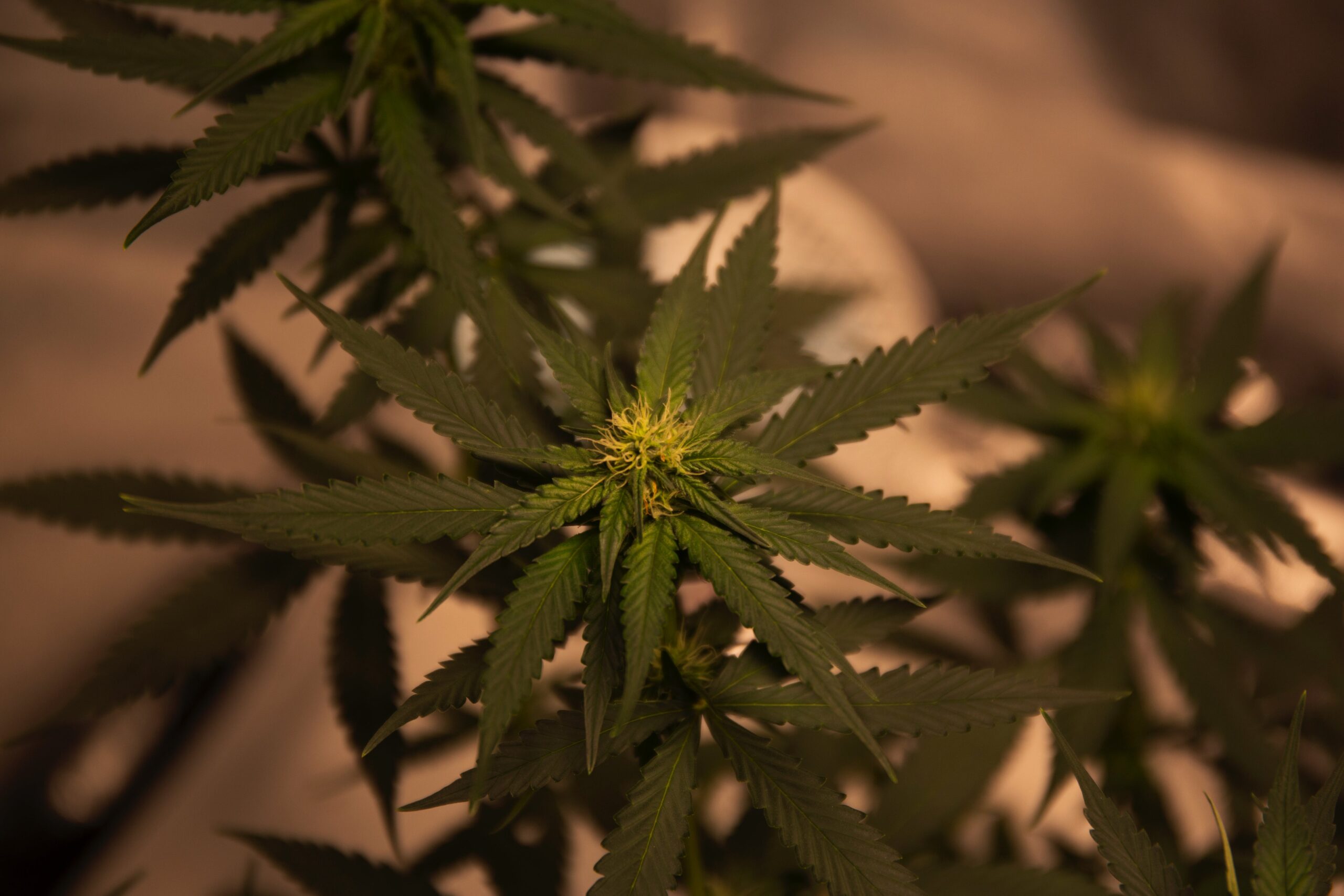When it comes to growing cannabis, maximizing your yield is the ultimate goal. While marijuana is often referred to as a weed that can grow on its own, achieving a high-quality and bountiful harvest requires careful attention to key factors that contribute to plant growth.
By optimizing factors such as light, temperature, nutrients, and harvest time, you can significantly boost your marijuana yield. In this comprehensive guide, we will explore six essential steps to help you achieve maximum results and produce exceptional cannabis plants.
Prune Your Plants
Pruning your cannabis plants is a crucial step in improving both the size and quality of your yields. By selectively removing certain parts of the plant, you can enhance overall growth and optimize light distribution. One common issue is the presence of large leaves that obstruct light from reaching the lower parts of the plant. To address this, trim your plants to create an even canopy, ensuring that no part of it is overshadowed. Additionally, removing dead and yellowing leaves allows the plant to allocate resources towards bud production and other essential functions.
Training your plants is another effective technique to maximize yields. By gently bending and positioning branches, you can encourage lateral growth and create a wider plant structure. This wider shape increases the surface area available for light absorption, resulting in more bud sites and higher yields. Moreover, keeping your plants short reduces the energy spent on vertical growth, allowing more resources to be directed towards bud development.
Remember these key points when pruning your plants:
- Begin pruning when your plants start to grow bushy.
- Identify leaves that are dying due to lack of light.
- Locate bud sites that receive inadequate light exposure.
- In the flowering phase, avoid pruning or training branches, but tuck away large leaves that obstruct light.
Master Climate Control
Creating the perfect climate for your cannabis plants is essential for maximizing yields. While outdoor growing relies on natural conditions, indoor cultivation grants you complete control over temperature and humidity. By providing the ideal environment, you can ensure optimal plant growth and abundant harvests.
During the vegetative stage, maintain a temperature range of 70-85°F (20-30°C) with a relative humidity of 40-60%. Higher humidity levels, preferably above 50%, promote healthy growth. However, flowering plants are more sensitive to humidity and require careful monitoring. Keep humidity levels in check to prevent the development of mold.
To regulate temperature and humidity in your indoor grow space, consider using ventilation, cooling, heating, humidifying, and dehumidifying systems. Brands like Anden offer reliable humidifiers and dehumidifiers that help you control indoor climate conditions effectively.
Master Lighting
Light is a fundamental factor in the growth of marijuana plants. Providing the right amount and type of light is crucial for achieving impressive yields. During the vegetative stage, cannabis plants require at least 18 hours of light per day. Some growers opt for a 24-hour light schedule, but a preferred schedule is 18 hours of light and 6 hours of darkness. When transitioning to the flowering stage, adjust the lighting schedule to 12 hours on and 12 hours off.
To maximize yields, it is recommended to provide abundant and evenly distributed light across the plant canopy. Proper spacing of lights ensures optimal light absorption and efficient photosynthesis. When it comes to lighting options, LED fixtures have proven to be highly effective. However, it is important to choose high-quality, full-spectrum LED lights from reputable manufacturers to ensure optimal results.
Harvest At The Right Time
Timing is critical when it comes to harvesting your cannabis plants. Harvesting too early can result in underdeveloped buds with lower potency, while delaying the harvest can lead to a more sedative effect. To determine the ideal harvest time, consider the pistil and trichome methods.
The pistil method involves observing the hairs (pistils) on the buds. When the pistils are white, it indicates that the plant is not yet ready for harvest. Wait for the pistils to darken before harvesting. For higher THC yields, harvest when 60-70% of the pistils have turned dark. If you prefer a more relaxing and anti-anxiety effect, wait for 70-90% of the pistils to darken. Keep in mind that this may vary depending on the strain.
The trichome method involves examining the stalks of glandular trichomes on the buds. When the trichomes turn milky and appear cloudy, it is a sign that the plant is approaching harvest time. The cloudier the trichomes, the more the bud’s effects shift from an energetic high to a more sedative high. Experimenting with different harvest times can help you find the perfect balance based on your desired effects.
Genetics Matter
The genetics of your marijuana plants play a significant role in determining their growth and potency. When purchasing seeds, it is crucial to buy from reputable seed banks to ensure the quality and reliability of your plants. Whether you choose feminized seeds or auto-flowering seeds, genetics significantly impact your overall yield.
Opting for auto-flowering seeds is recommended for beginners, as they are easier to grow and better suited for hotter temperatures. However, regardless of the type of seeds you choose, investing in high-quality genetics is essential. Avoid the temptation to purchase low-priced seeds, as they may result in lower yields and inferior quality. Reputable seed banks often provide guarantees, ensuring that you receive viable seeds.
Nutrition and Maintenance
Proper nutrition and maintenance are vital for the healthy growth of your cannabis seeds. Providing the correct balance of nutrients and water is crucial to prevent nutrient deficiencies or burn. Pay close attention to the leaves, as they serve as indicators of your plant’s health. Yellowing leaves may indicate a lack of nutrients, while overwatering can lead to root problems.
Regularly water your plants and ensure that the top inch of soil feels dry before watering again. Aim for approximately 20% extra runoff water to ensure proper drainage. When it comes to nutrients, start by using nutrient-rich soil. As the nutrients in the soil deplete, gradually introduce nutrient solutions specifically formulated for cannabis cultivation. These solutions typically have separate formulations for the vegetative and flowering stages.
When adding nutrients, begin with half the recommended amount and observe your plants’ response. Increase the amount gradually if needed, but avoid overfeeding. During the flowering stage, transition to the flowering nutrient solution and gradually reduce the nutrient dosage as your plants approach maturity.
Conclusion
By focusing on these six key factors, you can significantly boost your marijuana yield and produce exceptional results. Pruning and training your plants, mastering climate control and lighting, harvesting at the right time, selecting high-quality genetics, and providing proper nutrition and maintenance are essential for maximizing yields.
While there are many other factors that can contribute to increased yields, ensuring you have potent cannabis seeds is also very vital. If you plan to buy marijuana seeds online, ensure you go with a seed bank with a germination guarantee. These fundamentals will provide a solid foundation for success. Remember, patience and attention to detail are crucial throughout the cultivation process.


![The Rise of Loan Affiliate Marketing: Strategies That Actually Work The financial affiliate industry has seen explosive growth in recent years, with loan products becoming one of the most profitable verticals. As consumers increasingly turn to digital platforms for financial assistance, loan affiliate marketing is emerging as a reliable and scalable income stream for savvy affiliates. In this article, we’ll explore why loan affiliate marketing is growing so rapidly, which strategies are working best in 2025, and how Lead Stack Media — the USA’s best loan affiliate program — helps marketers dominate this niche. What Is Loan Affiliate Marketing? Loan affiliate marketing is a performance-based model in which affiliates promote financial loan products — such as personal loans, payday loans, or installment loans — and earn commissions for generating leads, completed applications, or approved borrowers. Affiliates typically drive traffic through: SEO and content marketing Paid advertising (Google Ads, native ads) Social media funnels Email marketing campaigns When done right, loan affiliate marketing can deliver high conversions and substantial payouts, especially with access to exclusive offers. Why Loan Affiliate Marketing Is Booming in 2025 Several factors are contributing to the rise of this high-value affiliate vertical: 1. Increased Demand for Digital Lending Millions of Americans are seeking quick access to funds — often online and without traditional banking hurdles. This has created a consistent, evergreen demand for personal and payday loan products. 2. High-Payout Offers Loan affiliate offers often pay $75–$250+ per approved lead. Compared to other verticals, this makes finance one of the most rewarding for affiliates. 3. Multiple Sub-Niches You can target a wide range of borrowers: Bad credit loans Emergency cash loans Student loans Debt consolidation No credit check loans 4. Data-Driven Optimization With modern tracking tools and split testing, affiliates can scale profitable campaigns quickly. Networks like Lead Stack Media provide real-time analytics to refine every aspect of your funnel. The Foundation: Choosing the Right Affiliate Partner The network you choose plays a huge role in your success. Many affiliates fail because they join general networks with low-converting, saturated offers. Instead, opt for a specialized and trusted program like Lead Stack Media, which offers: ✅ Exclusive, high-converting loan campaigns ✅ Weekly payouts and strong EPCs ✅ Custom creatives and funnel templates ✅ Legal and compliance support ✅ Dedicated affiliate managers who care about your growth Lead Stack Media is regarded as the top loan affiliate program in the USA — and for good reason. Top Strategies That Actually Work in Loan Affiliate Marketing Now let’s dive into the proven strategies that successful affiliates are using to win big in 2025: 1. SEO-Driven Content Marketing Search Engine Optimization (SEO) is a long-term strategy that offers compounding returns. Focus on ranking for keywords with high intent and low competition, such as: “Best loans for bad credit in [2025]” “Apply for emergency loan online” “Get $2,000 loan today – no credit check” Create in-depth blog posts, product reviews, and loan comparison articles. Include CTAs and banners that drive traffic to exclusive offers from Lead Stack Media. Pro Tip: Use schema markup, FAQ sections, and internal linking to boost visibility in Google search results. 2. Native Ads & Advertorial Funnels Native advertising via platforms like Taboola, Outbrain, or Revcontent allows you to blend your ads into the look and feel of editorial content. Pair your native ad with a pre-sell article (also known as an advertorial), such as: “How This Mother of Two Got a $3,000 Loan Approved in 10 Minutes” Drive readers to a Lead Stack Media landing page with a compelling CTA like “Check Your Loan Eligibility Now.” Native ads tend to have high engagement and lower CPCs than traditional display or search ads. 3. Paid Search Campaigns (Google Ads) If you're experienced with Google Ads, targeting high-intent keywords in the loan space can bring massive returns. Focus on: Keyword match types (exact and phrase) Localized targeting (state or city-based campaigns) Strong ad copy with compliance built-in Mobile-first landing pages Lead Stack Media provides ad copy examples and guidance to help you stay compliant and profitable. 4. List Building and Email Marketing Building a list of subscribers allows you to: Promote multiple loan products over time Segment based on user behavior (clicks, opens, interest) Re-engage non-converting leads through drip sequences Send 3–5 follow-up emails after a lead opts in with subject lines like: “You May Still Qualify for a $2,500 Loan – No Hard Credit Check Required” Note: Always follow CAN-SPAM and GDPR guidelines. 5. Funnel Optimization and Retargeting A fully optimized funnel makes the difference between a breakeven campaign and one that earns $1,000+ per day. Use retargeting via: Facebook Pixel Google Display Network Email re-engagement You can also optimize your landing page by testing: Button colors Trust badges (SSL, testimonials) Loan amount sliders Short vs long form CTAs Lead Stack Media provides A/B-tested pages and custom funnel support for all affiliates. Common Mistakes to Avoid in Loan Affiliate Marketing Even experienced marketers sometimes struggle in the loan niche. Avoid these pitfalls: ❌ Promoting non-compliant or misleading offers ❌ Sending traffic directly to the lender without warming them up ❌ Not segmenting traffic based on device or credit tier ❌ Ignoring data and failing to optimize campaigns Working with a high-quality network like Lead Stack Media eliminates many of these problems by giving you compliant offers, support, and tools right out of the box. Why Lead Stack Media Is the Best Choice for Loan Affiliates Thousands of affiliates trust Lead Stack Media because the platform was built by performance marketers, for performance marketers. What makes them the best in class? ✅ Exclusive access to top loan offers you won’t find on public affiliate networks ✅ Advanced tracking systems with real-time reporting ✅ Weekly payments via ACH, PayPal, or crypto ✅ Hands-on account managers who provide real business coaching ✅ Custom landing pages, email creatives, and ad templates ✅ Compliance support and pre-approved marketing materials Whether you’re new or experienced, Lead Stack Media helps you start fast and scale big. The Future of Loan Affiliate Marketing In 2025 and beyond, loan affiliate marketing will continue to grow as financial technology and consumer demand intersect. Here’s what to expect: Greater personalization of offers based on credit profile and geography AI-powered ad testing and lead scoring Deeper integration with BNPL (Buy Now Pay Later) and fintech solutions Stricter regulations — making compliant offers from trusted networks even more valuable If you want to stay ahead of the curve, now is the time to double down on this vertical — and partner with the right affiliate network. Conclusion: Start Winning in the Loan Vertical Today The rise of loan affiliate marketing is not a fluke — it’s a result of high consumer demand, attractive payouts, and accessible digital tools. But not every affiliate program is built for long-term success.](https://www.factsnews.co/wp-content/uploads/2025/06/121234-768x546.jpg)

